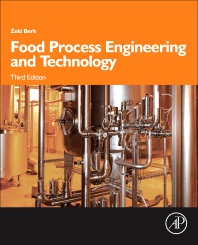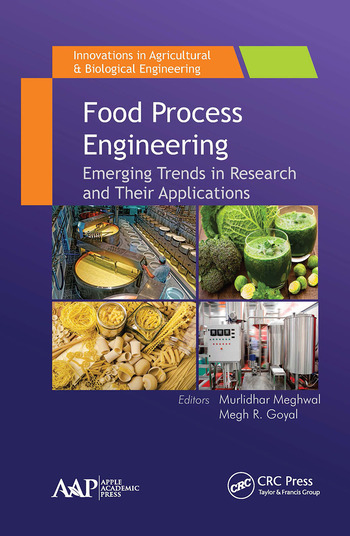Temperature Monitoring and Control
Linking process control with building control and HVAC systems for better control
Integrating process control can help improve quality while saving energy as well

Editor’s note: This is Part Two of three temperature articles to accompany the July Tech Update on Temperature Monitoring and Control. Part One looked at making the move from analog to digital temperature monitoring and control while Part Three considers IIoT and wireless temperature monitoring and control.
Another article entitled “No spiral freezer should be an island of automation” and written for this series by Ivy Arkfeld, energy engineer for VaCom Technologies, showed how integrating a spiral freezer with process and refrigeration controls increases efficiency, speeds production and saves energy.
***
While not intuitively obvious, some processes lend themselves to having their control systems linked to a building’s control system, climate controls or HVAC. For example, a spiral freezer should be linked with process and environmental controls to save energy and improve the process. Other process applications that can benefit from further integration with environmental controls include drying, baking and other yeast-based processes.
Yet more obvious would be linking freezer and cooler systems in storage locations with controls. I asked the following questions of my panel of experts, control system suppliers, sensor makers and system integrators (SIs). Their responses follow the questions immediately below.
Questions: With ingredients/products in storage, should the monitoring and control of storage temperatures be part of a building control system or a standard process control system? How can these two systems be integrated to provide a holistic view of process and storage temps within a single building or campus. What software systems can provide this view of both process and storage temps?
From the SIs
A properly designed process controls system with product temperature monitoring should be used in conjunction with a building control system; and in large processing facilities it becomes a necessity. Having two independent systems or using one or the other tends to be inefficient and too complex to provide for effective climate control. With the standardization of communication protocols and the multitude of protocol conversion devices, communications between the plant process and the facility climate controls systems can be easily achieved.
By exchanging information between the two systems, a plant can have better visibility and control of the climate control systems. With that, many plants are seeing an increase in climate control system efficiencies and reduction in energy usage. For example, in a production line that utilizes heat for processing (fryer, ovens, etc.), cooling the plant becomes necessary for operations and personnel. However, when the production line is not running and the plant is idle, communications to the HVAC system allow it to reduce the amount of resources needed sooner than if it were reliant on the HVAC controls temperature monitoring alone. It also becomes more visible to operations, and problems can be more quickly addressed when the building controls system is part of the SCADA system. In facilities where climate control is essential to the quality of product, operations can be better notified when an abnormal condition exists and the potential for product damage is reduced.
—Ryan Beesley, CAP, regional engineering manager, Concept Systems, a CSIA member.
Most monitoring and control of storage temperatures we’ve seen over the years have been part of a BMS (building management system). Many of the BMSs we’ve encountered also have a dedicated data historian. Many valid reasons exist for a food processor to incorporate the controls for storage temperatures of their ingredients and products into the BMS so long as the BMS can accurately and reliably control the storage temperatures, continuously record the actual temperature values, and have the analytics built-in to monitor the health and integrity of the temperature sensing devices as well as provide the food processor’s technical support group with prompts and notifications of devices or temperatures drifting into an unsafe or unreliable condition. When the BMS system cannot provide all of these necessary functions to assure reliability and stability of the ingredients or products, then the standard process control system should be leveraged to provide this functionality for the food processor.
We’ve also been involved with projects where storage temperatures are controlled by the BMS, and the BMS and process control system exchange data points so the process control system can perform the data historizing and analytics—and provide the necessary notifications to the operators and technical support groups in the same manner as the system handles CCPs of the process itself.
—Steve Malyszko, co-founder, Malisko Engineering, a CSIA certified member
Automation suppliers
Data integration and temperature control between storage, the manufacturing space and the office space is essential to gaining value from this infrastructure investment. A building management system can provide dashboards for all aspects of a building or campus and is a collection of smaller islands of automation brought together under one system. A typical building management system can provide access and control for HVAC, security (door status and access), fire, energy (WAGES – water, air, gas, electric, steam) and safety systems (PA, chemical alarm systems).
These systems are integrated using an Industrial Internet of Things (IIOT) platform that can connect to disparate data sources (ODBC, JDBC, Oracle, XML and others) and transform the data into objects for consistent reporting and notifications. An IIOT platform has the capability to connect to control systems and provide secure communication for connecting to third party applications extensible via an application programming interface (API). Two-way communications to these systems provide real-time monitoring and control.
Because HVAC is often the largest energy consumer in food plants, these systems can be designed to reduce peak energy consumption while maintaining temperature. By design, HVAC systems should be capable of maintaining temperature on the hottest day of the year. To reduce peak consumption, compressors are staggered so they all do not run at the same time, which reduces peak load. An information-enabled facility can also schedule production of high energy-products during evening hours, while demand is low, and use weather forecasts to optimize production schedules.
Building management systems also provide notifications when temperatures are trending out of control. Analytics can be applied to look for abnormal usage for a given outside temperature and provide warnings before maintenance is required.
— Dan Reinarts, industry technical consultant, Rockwell Automation
Many HVAC systems are now being built with sensor capabilities and a control management system that monitors its health. This finally makes it possible to get more granular, and monitor down to each piece of equipment as long as it has its own sensors and monitoring. Interoperability is needed between all of the different equipment in order to aggregate the data into the larger building system.
Only a few vendors can merge all of these inputs into one centralized monitoring system and also respond to condition based system alerts across a company’s entire network when multiple regions are involved. There’s also a lot more flexibility in working with a vendor that is equipment agnostic so systems are future proofed, allowing for any kind of equipment to be added. For Cloudleaf, building monitoring down to the individual equipment level is just one piece of the puzzle that we incorporate into managing condition, temperature, and context across a company’s entire operations.
— David Parker, chief evangelist, Cloudleaf
From sensor/device suppliers
The availability of information is typically a limitation of the communications protocol being used in the network. If the temperature measurements specifically are digital and on an Ethernet network, for example, this allows consolidation of the IT and OT worlds by making more data available cross-platform, which is part of the appeal of using Ethernet. Our goal is to aid in this digitalization process by offering more information, and increased ways to access it at the sensor assembly or point of measurement.
— Robert Villarreal, product marketing manager – temperature and system products, Endress+Hauser
If the facility’s existing system can ingest sensor data, this is a key area of integration. Monnit sensors work with multiple protocols, such as BACnet, Modbus, and online APIs, that will facilitate system integration. But if the building doesn’t have a control system capable of ingesting sensor data, automated notifications can be configured to allow operators to identify situations and address them proactively.
—Nick Mecham, VP, business development, Monnit Corporation
If an otherwise empty warehouse stores high value product that is vulnerable to temperature and humidity swings, whatever environmental controls are used should mainly be concerned with the maintenance of the product quality and might require back-up systems in case of a power failure. If the building would require very little more to maintain its environment, they should be one and the same. If there is a large amount of the building that is not used or is used for a different purpose, the system should be sized to protect what is important.
—Alan Clark, applications engineer, Palmer Wahl Instruments,
The answer depends somewhat on the quality system philosophy of the organization. Control systems can be monitored with separate TEGAM thermometers wirelessly and remotely. Other control systems can be checked periodically with TEGAM temperature calibrators to ensure that the system remains within specifications.
— Adam R. Fleder, president, TEGAM
Looking for a reprint of this article?
From high-res PDFs to custom plaques, order your copy today!









